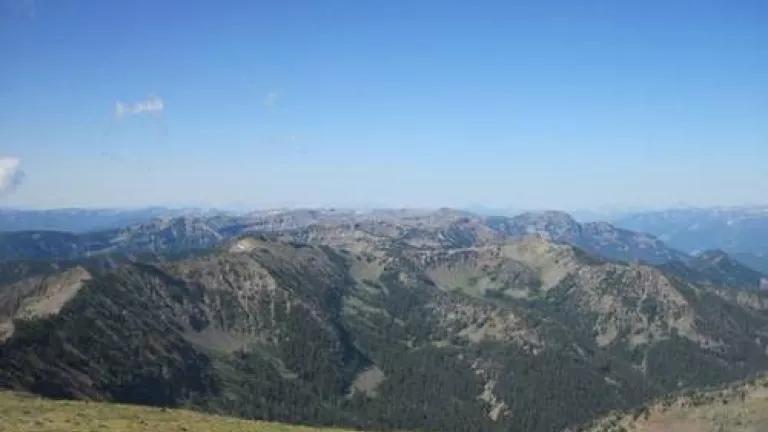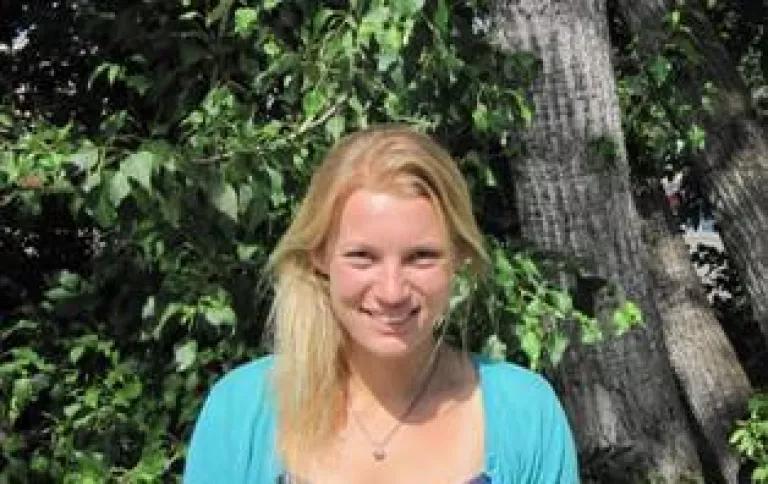
Growing up in Florida, the West was a mystery to me. Yellowstone was nothing more than “that place where Old Faithful is,” the Rocky Mountains were where my friends went skiing, and grizzly bears and wolves were figments of both my nightmares and dreams. But as I grew into an avid hiker and cyclist, the snowcapped mountains and empty roads of Montana caught my attention. In Florida, the highest elevation is 429 feet, while in Montana some mountains reach heights of nearly 13,000 feet. I had the “grass is always greener” mindset, and the alpine elevation and unadulterated wilderness attracted me to the Greater Yellowstone Ecosystem even more.
I yearned for mountains, for big skies, for Montana. Finally, an opportunity presented itself that combined my academic interests with my love for nature. I applied for an internship with the Natural Resources Defense Council in Bozeman, Montana, a town situated around more mountains than I could possibly name. I was offered the internship in the spring, and I arrived in Big Sky Country that June. Now, in my last week, I realize that my summer was much more than an internship with one of the nation’s top conservation groups: It may sound cliché, but I lived my dream.
I became interested in environmental policy last year when I was a freshman at Stanford University. In Introduction to Earth Systems, I learned about the Keystone XL Pipeline and found myself captivated by the controversy. An internship with NRDC was a great fit for my academic interests, and it presented me with exactly what I wanted: hands-on experience with major environmental issues.
When I arrived in Montana, I was oblivious to the wolf-hunter-rancher dilemma I would soon find myself reading about. But my ignorance was bliss when it came to my job; I was a blank slate. I had no previous ideas, views, or opinions, and I could present my unbiased analysis.
Before I could start analyzing the hundreds of wolf studies sent my way, I had to catch up on the background information about a subject I knew nothing about. My knowledge of wolves consisted of movies, fairytales, and not much else. Quickly, I learned about the misunderstandings surrounding this top predator. During the early 20th century, fear sparked the killing campaign throughout the United States that drove wolves close to extinction in the Lower 48. With wolves gone, however, ecosystems began to fall out of whack. Elk numbers skyrocketed, vegetation suffered, coyote numbers went up, pronghorn antelope numbers went down. With knowledge gained and the problem realized, Yellowstone National Park reintroduced approximately 30 wolves in 1995-96 in an attempt to restore the ecosystem. This reintroduction is one of America’s greatest conservation success stories.
But the return of the wolf has also brought conflict and resentment. When new friends this summer asked me what I was working on for NRDC, I had to be careful about my response. Talking about wolves in Montana is the equivalent of talking about politics or religion; it’s almost always a heated subject. Some love ‘em, some hate ‘em, and the State of Montana decided this summer to further liberalize the hunting and trapping of wolves during the upcoming season. Whenever I explained that I’m studying wolves, people always had an opinion to share.
My main project focused on analyzing and summarizing hundreds of wolf-related documents and studies and organizing them by topic, date, and author. Topics ranged from common wolf diseases to how wolves affect ungulate browsing in Europe. As a rising sophomore in college, many of these studies made little sense to me, and I sometimes could not even understand their relevance. But I trudged through and tried to piece together all the key points. On the other hand, some stated the obvious in such layman terms that a child could logically come to that same conclusion. Reviewing and organizing all of these studies taught me how to analyze wildlife conservation issues, and the documents I pulled together will help NRDC with its wolf work for years to come.
Although I spent most of my time behind the desk analyzing studies, my knowledge was supplemented with several out-of-the office meetings and hearings. During my first few weeks with NRDC, I drove to Helena for the Montana Fish, Wildlife & Parks meeting about wolf hunting and trapping regulations. This was my first exposure to the heated politics surrounding wolves. The board presented the current wolf hunting plan and dozens of Montana residents, wildlife advocates, hunters, and ranchers all gave their personal opinions on the matter. Before that day, I did not appreciate that snaring and trapping still exist. I had heard of these methods and had seen them in movies but foolishly thought they were a part of the past now. Although FWP ruled it illegal to snare wolves, they are again allowing trapping.
When I joined NRDC in June, the office immediately increased by 33%. Working in a small office gave me more responsibility. In addition to the wolf studies, I had a short-term project where I had to determine whether NRDC should support a proposed land exchange. My project involved researching and analyzing all of the background information – and then offering my conclusion on which position was in the environment’s best interest. Again, the controversy and debate fascinated me, and it was enthralling trying to determine which course of action made the most sense.
In two words, this summer was about new experiences. With the exception of a few mountaineering and backpacking trips, I had never been above sea level. Working with NRDC allowed me to see how adrenaline-rushing life in the Northern Rockies can be. I climbed mountains that pushed my comfort zone to a new level and learned how to live on my own. Although I often felt overwhelmed by information and details beyond my 19 years, it forced me to learn outside of the classroom. Intellectually, this summer exposed me to pressing dilemmas and problems that could gravely impact the wilderness I love.
As I go into my sophomore year of college, my mind is filled with new thoughts and ideas surrounding my goals in life. Should I go to law school? Would I rather work for a nonprofit or large corporation? Do I want to live in a huge city surrounded by people or in a smaller town close to the outdoors? Most of these questions will remain unanswered for now. But after spending my summer in Bozeman interning for NRDC, I have reached one conclusion: heated debates about controversial environmental issues give me the same adrenaline rush as summiting a 12,000-foot mountain.

A summer intern in NRDC's office in Bozeman, Montana, Taylor Burdge will be a sophomore at Stanford University this fall, where, among other things, she is a member of Stanford's Varsity Women's Rowing Team.
